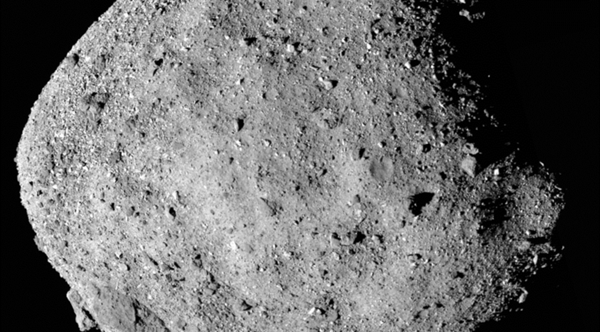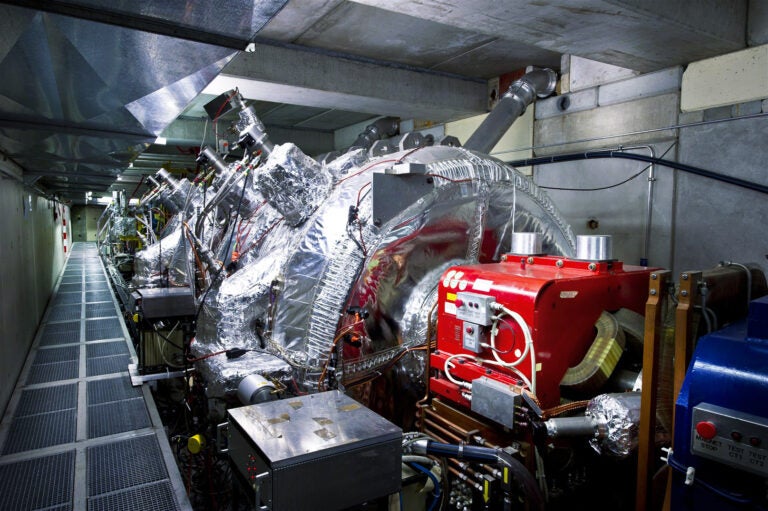OSIRIS-REx’s First Findings
OSIRIS-REx has been busy ever since it arrived at the asteroid Bennu December 3. The latest updates from NASA reveal that the space rock is porous, blue, and covered in massive boulders. More excitingly, the mission discovered evidence that Bennu’s minerals interacted with water at some point in its distant past.
During a press conference today at the American Geophysical Union’s 2018 Fall Meeting, the OSIRIS-REx team revealed the first results from the spacecraft’s ongoing mission. After reaching its target earlier this month, the crafy is currently observing the rocky world remotely as scientists decide where to land.
Some of the initial data indicate that Bennu’s surface contains clay filled with hydrated minerals, indicating that they came into contact with liquid water at some point. The asteroid itself is too small to host any such water on its surface, which means its larger parent body likely did at one time. The finding could help reveal how Earth got much of its water, as well as provide hope to future asteroid miners.
Researchers found the evidence for these hydrated minerals using the spacecraft’s two spectrometers: the OSIRIS-REx Visible and Infrared Spectrometer (OVIRS) and the OSIRIS-REx Thermal Emission Spectrometer (OTES).
“This is a great surprise,” Amy Simon, Senior Scientist for Planetary Atmospheres Research in the Solar System Exploration Division at the NASA Goddard Space Flight Center, said at the conference.
The Surface Emerges
The mission team also found that asteroid looks fairly similar to what they had anticipated, based on a 2013 model. New imagery reveals the same large boulders that stood out to them before, though the surface does appear to be more rugged than previously thought.
Based on their model, the team expected the largest boulder on the asteroid to be about 33 feet (10 meters) tall. But, using preliminary calculations from data taken with the OSIRIS-REx Camera Suite (OCAMS), researchers now estimate the largest boulder to be closer to 164 feet (50 m) tall and about 180 feet (55 m) wide.
The team has also found far more boulders covering Bennu’s surface than expected, though smoother regions do exist. This is important for the craft’s mission to return samples of Bennu to Earth, as its arm isn’t very strong, and it’ll need to land in a place where the rocks are small enough to pick up easily.
A Lightweight Space Rock
The results also reveal that the asteroid has a density just under 75 pounds per cubic foot (1,200 kg/m3). Since the average asteroid has a density around 187 pounds per cubic foot (3,000 kg/m3), this makes Bennu much less dense than the average. This likely means that Bennu is porous, filled with holes and caves like a sponge.
The team also found that the asteroid’s surface is littered with both shiny and non-reflective rocks, something the team hopes to further examine in the future. They also confirmed Bennu’s color: The asteroid is blue (ish), they say.
On December 31, OSIRIS-REx will enter into orbit around the asteroid. This will make Bennu the smallest object ever orbited by a spacecraft. The craft will remain in orbit until February 2019, when it will embark on a series of flybys to survey the asteroid.
“We can’t wait to spend the next year mapping this asteroid,” said Dante Lauretta, who currently serves as the principal investigator on the OSIRIS-REx mission. “We have an amazing spacecraft with a world-class suite of instruments and a fascinating world to explore.”










